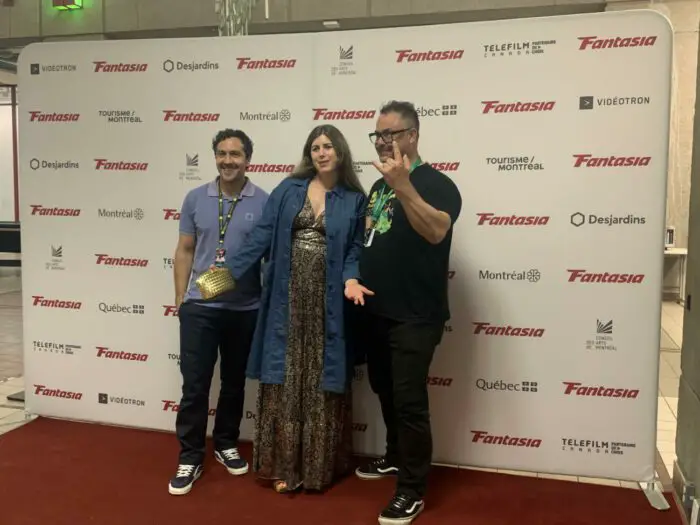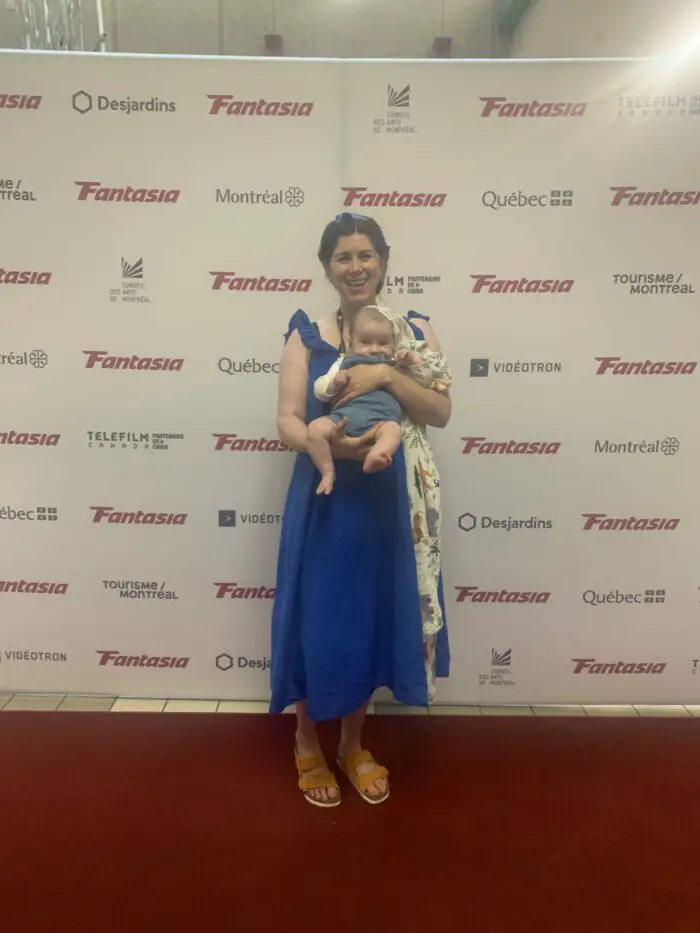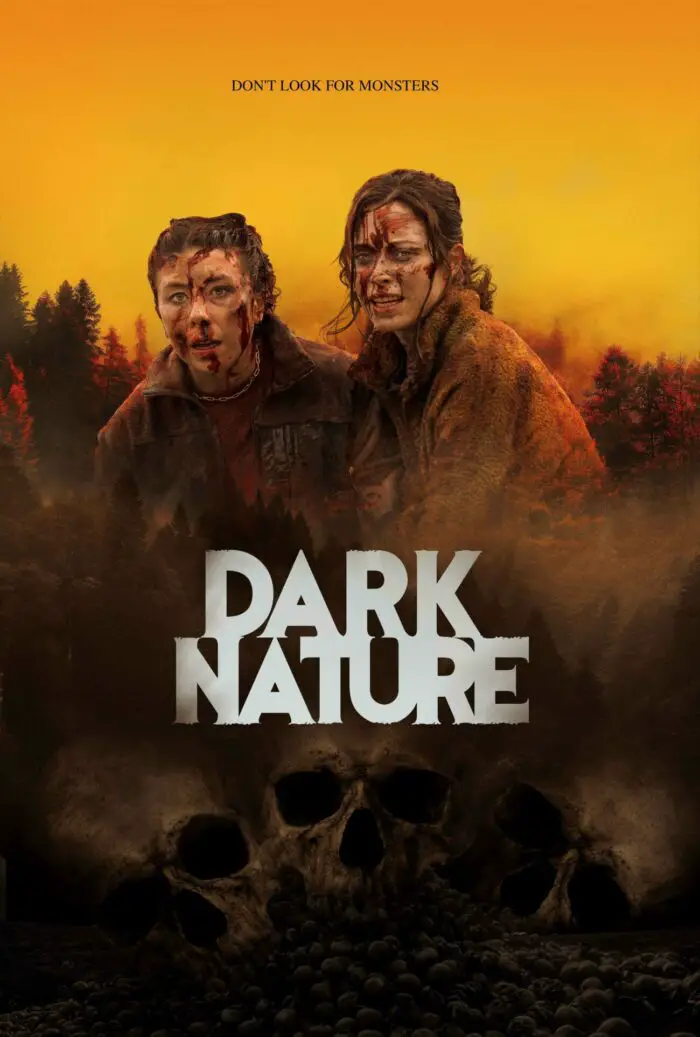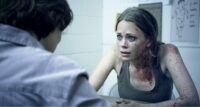There are a few new horror releases this week including Gravitas Venture’s Walking Against the Rain and Shudder’s Influencer. Another title worth paying attention to is Epic Pictures’ Dark Nature, which premiered at the Fantasia International Film Festival last year and also was one of TIFF’s selections to the Fantastic 7 event at Cannes, which was presented in collaboration between the Cannes Market and the Sitges International Film Festival. Written and directed by Berkley Brady, the film follows Joy, a survivor of domestic violence, as she joins her friend Carmen and her therapy group on an isolated weekend retreat in the Canadian Rockies. Led by the enigmatic Dr. Dunnley—whose methods are experimental and, at times, dubious from Joy’s outside perspective—the experience eventually shatters the border between reality and delusion. Joy begins to suspect that they are being stalked by her abuser when in truth, the entire group will be forced to confront a threat even more terrifying than the monsters of their past. In the below interview, Berkley talks about not overdoing horror tropes, the music of Dark Nature, and more.

Dark Nature first premiered at the Fantasia Film Festival last year. What was one of the most exciting things about screening the movie there? Did the film change at all from that screening to the release?
The best thing about Fantasia is definitely the people! I loved meeting Mitch Davis and was so excited to know Carolyn Mauricette would be heading my Q&A, but sadly she got COVID right before. Effing COVID! I was also traveling there with my 4-month-old baby Cullen, so going to the screening was the first time I left him with a babysitter. Little babies sleep a lot, so I was able to secretly nurse him during a few screenings of other horror movies and see them, which was great. He’s my lil’horror baby. After that screening, nothing changed about the film. We had already taken it through color and sound design, so no changes allowed.
What do you think sets Dark Nature apart from other recent horror movies you have seen?
Dark Nature isn’t afraid of friendship or big feelings. I hope the scares are there just as much as the emotion of friendship. Douglas Sirk is a big influence on me; I want to make horror films that are rich with color, feeling, and not afraid of anything. I’ll also add that each and every one of our actors is an absolute talent. Their work here is really good, on every level.
The characters in Dark Nature are all recognizable people who feel real. Did you draw any inspiration from real life or real situations?
Of course! I think my own experience with being in what turned out to be an abusive relationship is in the film, as is my own struggle to get out of that relationship, the depression I experienced while in it, and my empathy for my friends who were there for me, looking back. I also included impressions and experiences I have had from friends, and our cast worked with an actual therapist to figure out how group therapy functions.
You have talked about a few similarities between Dark Nature and the 2005 film The Descent. What was it about The Descent that really impressed you?
The first time I saw The Descent, I was blown away. Let’s remember that film is nearly 20 years old (!). But at the time I saw it, probably around 2010, it was literally the first movie where I saw women kicking real ass, struggling to survive in a way I felt I might do as well. The difference is that no best friend of mine is cheating with my husband, nor would they ever. And vice versa. That was one element of the story in The Descent that felt hollow to me. So with my film, I wanted this to be an ode to friendship, because that’s the reality of female friendships that I know.
What was your philosophy on jump scares in Dark Nature?
I don’t think they should be overdone, because it can feel really cheap. To be honest, I didn’t totally nail the second jump scare here, and in truth, they are technically quite challenging, especially when you’re shooting in a location where you can only point the camera in one direction. But a good jump scare is something I aspire to. I respect my audience a lot, and I want to be respected as a horror fan…the jump scares gotta be great, or they gotta get outta there.

Because you also wrote the script, did the script change at all once shooting commenced? If there was something that you modified, can you tell us what that was?
It did, absolutely. I wish I had more time as a writer to work during the shoot because I would have added more therapy scenes from the backstory the actors provided. But the reality of an Indie shoot—and budget—is that there isn’t time to do anything, but claw your way to the end of a day.
There were slight modifications throughout, and I do want to tell you about them all, but truthfully I can’t remember! I can say that the monster we originally designed, paid so much for, and scheduled, didn’t work out. In the middle of the shoot our incredible Head of Makeup, Kyra Mcpherson, literally saved the day, along with our brilliant costume designer, Jen Crighton. They re-designed the monster from scratch, created him after shooting long days, and quite literally saved the movie. Art always imitates life, but life imitates art. Just as in the story, it’s amazing friends who saved us.
The music in horror films plays a very important role, almost guiding the audience of when they should be scared or not. How involved were you with the creation of the score for Dark Nature?
There was a wonderfully creative interplay between score and sound design, with our composers, Ghostkeeper, and our sound designers at Propellor Studios in Calgary. I met with Ghostkeeper and downloaded all my thoughts about the sound. We agreed it should be organic, minimalistic, and involve whispers and drums. We wanted it to be of this place, to sound like heartbeats and fear itself. The drums they played on are literally from the skins of animals in this area. I also sent them songs from some of my favorite horror soundtracks, like Pet Sematary and It Follows. But once they had all the info, they really wanted to just do their thing. There was some back-and-forth for notes, but nothing too extensive. My main note to them was always, more scary. Then I worked for about a week with the sound designers, in studio, and we were able to really play with the compositions, taking away and adding some elements. The big thing we worked on was the silence; when the creature is targeting them, it gets into their brains, like the Cuba effect. All sound and reality drops away. Designing this was definitely one of my favorite parts of making this film.
Are there other stories you would like to tell in the horror realm? If so, can you briefly touch on those?
I’m obsessed with horror and would love to direct any horror project I can. If you’ve got an incredible script, let my agent know! I’m currently working with some insanely talented people in Montana on a sort of Western/Ghost story, a sort of The Piano meets The Others.
Any other comments you would like to add about Dark Nature?
Sound is so important to this film; if you can watch it at home on a big screen and just pump the sound so it’s all around you, you’ll get what we were truly going for. It’s a film where we tried not to over-explain, or exploit anyone’s trauma, but hopefully, it’s relatable and cathartic to everyone. Thank you for your time!!




